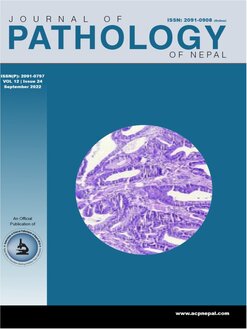Increment in hemoglobin and hematocrit levels after blood transfusion in a tertiary care hospital
DOI:
https://doi.org/10.3126/jpn.v12i2.52822Keywords:
Anemia; Blood transfusion; Hemoglobin; Hematocrit; Packed red blood cells; Whole bloodAbstract
Background: Blood transfusion is considered to be the first line of therapy for all types of anemia. One unit of blood transfusion is known to increase the hemoglobin level by 1g/dl and hematocrit by 3%. This study aims to analyze the mean increment in hemoglobin and hematocrit levels after 1-unit of blood transfusion in a tertiary care hospital.
Materials and Methods: A retrospective study was done. 133 patients with 1-unit of blood transfusion (whole blood or packed red blood cells)having pre and post-transfusion hemoglobin and hematocrit values were enrolled in the study.
Results: Patients of all diagnoses, who received blood transfusion were enrolled, with the highest proportion (27.1%) in the age group 18-35 years. Male predominance was seen (57.1%) and a majority of the patients were on hemodialysis (57.9%). The most common blood group was B positive (30%) and 90.9% were Rh positive. 48 patients were transfused with whole blood and 85 were transfused with packed red blood cells. The mean increment in hemoglobin and hematocrit levels were 0.75 ± 2.21 and 2.47 ± 6.84 respectively. A significant increment in post-transfusion parameters was seen compared with pre-transfusion parameters (p <0.001).
Conclusions: A mean increment in hemoglobin and hematocrit level was seen in patients after transfusion. However, the value of the increment is low in our study as compared to the literature. This may be due to varied reasons, ranging from a history of chronic disease, acute bleeding, the volume of other fluids administered, and the characteristics of the donor.
Downloads
Downloads
Published
How to Cite
Issue
Section
License
Copyright (c) 2022 Prakriti Shah, Manisha Shrestha, Aasiya Rajbhandari, Rohit Khadgi, Prayash Chand

This work is licensed under a Creative Commons Attribution 4.0 International License.
This license enables reusers to distribute, remix, adapt, and build upon the material in any medium or format, so long as attribution is given to the creator. The license allows for commercial use.




